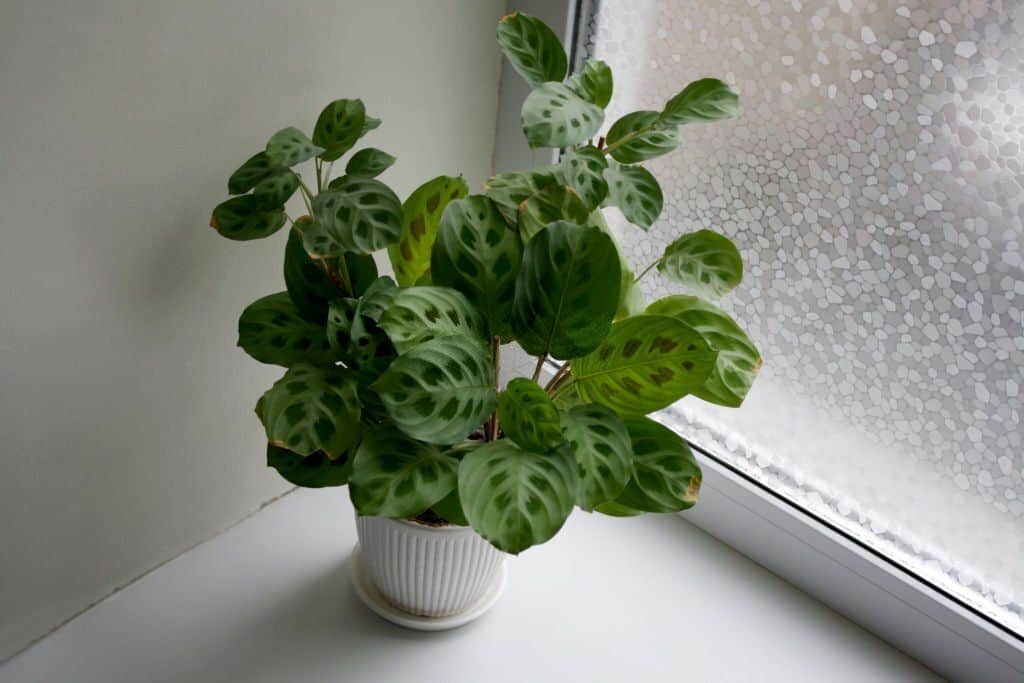You may be baffled about some prayer plant problems you encountered in your garden.
If you’ve ever had the pleasure of owning a Maranta leuconeura, commonly known as the prayer plant, you know that its stunning foliage can transform your living space into a tropical paradise. But like any houseplant, nurturing these remarkable plants can sometimes present challenges.
Are you seeing those lush green leaves starting to droop? Or perhaps they are turning yellow and the edges have become quite brown and dry? If so, then you are not alone – it is something that plant parents encounter with this particular type of plant.
So, if you are tired of dealing with these issues, let’s discuss what the common causes are and how to prevent them. Let’s dive right into it.

Common Prayer Plant Problems You Never Knew
Prayer plants, scientifically known as Maranta leuconeura, are beloved for their stunning foliage and ability to brighten up any indoor space. However, like all plants, they can face various issues that may leave their owners puzzled and concerned.
Here are some of the most common problems encountered when caring for prayer plants and provide practical solutions to ensure your Maranta thrives.
1. Yellowing Leaves
One of the most prevalent issues that prayer plant owners face is the yellowing of leaves. This can be alarming, but it’s essential to understand that there are several potential causes. The first culprit is often overwatering. Prayer plants prefer consistently moist but not waterlogged soil. Ensure that your pot has proper drainage, and let the top inch of soil dry out between waterings.
Another reason for yellowing leaves could be inadequate lighting. While prayer plants prefer indirect, bright light, too much direct sunlight can scorch their leaves. Adjust the lighting conditions to ensure your plant receives the right amount of light.
2. Wilting Foliage
If your prayer plant’s leaves start to droop or wilt, it’s usually a sign of underwatering. These plants thrive in a humid environment, so make sure to keep the soil consistently moist, especially during the growing season. Consider using a humidity tray or misting the plant to boost moisture levels.
3. Brown Leaf Tips
Brown tips on prayer plant leaves are typically caused by low humidity levels. Indoor environments often have dry air, which can harm the plant’s delicate foliage. To combat this, place a humidity tray near your prayer plant or use a room humidifier. Grouping plants together can also help create a more humid microclimate.
4. Leaf Curling
Leaf curling can be a natural part of the prayer plant’s growth pattern, but it can also signal issues. Overfertilization or exposure to drafts can cause curling. Ensure you’re using a balanced liquid fertilizer, and keep your plant away from drafts and temperature fluctuations.
5. Pest Infestations
Prayer plants are not immune to pests like spider mites, aphids, and mealybugs. Regularly inspect your plant for signs of infestations, such as webbing, sticky residue, or tiny insects. Treat any infestations promptly with neem oil or insecticidal soap.
Avoid These Common Mistakes That Lead To Prayer Plant Problems
Now that you know the causes of these common prayer plant problems, let’s talk about what could have gone wrong. Here are some situations that you can address to prevent these issues from occurring.
1. Overwatering
One of the most frequent issues encountered with prayer plants is overwatering. The roots of prayer plants are sensitive to excess moisture, which can lead to root rot and a host of other problems.
2. Inadequate Drainage
If your prayer plant is in a pot without drainage holes or the potting mix doesn’t allow water to escape properly, excess moisture can accumulate.
3. Underwatering
While overwatering is a common problem, underwatering can also harm your prayer plant. When the soil becomes too dry, the plant may suffer from issues like wilting, drooping leaves, and stunted growth. Factors contributing to underwatering include:
Inconsistent Watering: Neglecting to water your prayer plant regularly or allowing the soil to dry out completely can stress the plant.
Lack of Humidity: Low humidity levels in your home can cause the soil to dry out more quickly, requiring more frequent watering.
3. Incorrect Lighting
Prayer plants thrive in bright, indirect light. Inadequate or excessive light can lead to various problems: Too much direct sunlight can scorch the leaves, while insufficient light can cause them to turn yellow or lose their vibrant patterns.
Insufficient light may cause your prayer plant to grow tall and leggy as it reaches for light.
4. Low Humidity
Prayer plants originate from humid tropical regions, making them sensitive to low humidity levels. Dry indoor air can lead to issues like:
Brown Leaf Tips: Low humidity can cause the tips of the leaves to turn brown and crispy.
Stunted Growth: Inadequate humidity can slow down your prayer plant’s growth.
5. Poor Soil Conditions
The type of soil you use can significantly impact your prayer plant’s health:
Compacted Soil: Soil that becomes too compacted can impede root growth and drainage.
Nutrient Deficiency: Inadequate nutrients in the soil can result in stunted growth and pale, unhealthy foliage.
6. Temperature and Drafts
Extreme temperatures and drafts can stress your prayer plant:
Cold Drafts: Exposure to cold drafts can lead to leaf damage and overall plant stress, especially during the winter.
Temperature Fluctuations: Sudden temperature changes, such as placing your plant near heaters or air conditioners, can harm your plant.
Conclusion
While prayer plants can face several common problems, knowing how to identify and address these issues is key to keeping your Maranta healthy and vibrant.
Remember to maintain the right watering schedule, provide proper humidity, ensure suitable lighting conditions, and monitor for pests.
With a little care and attention, your prayer plant will continue to grace your home with its captivating beauty and vibrant foliage. Happy gardening!